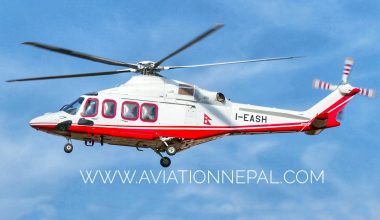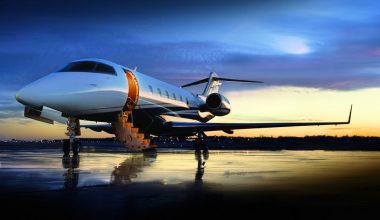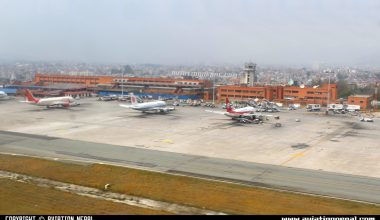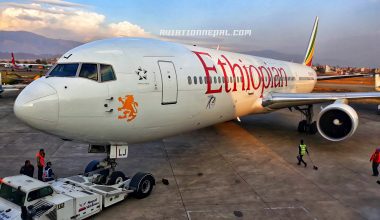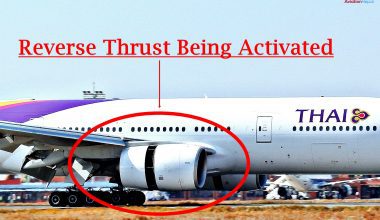
Concorde; Supersonic Passenger Airliner
For over 27 years Concorde took passengers to the very edge of space at speeds faster than a bullet. Concorde was a unique achievement on an age that believed in technology and speed. But crash in 25th July 2000 was the beginning of the end for supersonic passenger flight. Concorde ended in the museum when it could still be flying today.
In the days of cold war between east and west, everyone wanted to be first with a supersonic Airline. The race was not just a matter of national pride, stakes were high for whoever could sell the world the next generation of Airliner but the challenge was pure science fiction but the time only military jets went supersonic.
First question was what should be the shape of the wings. Normal wings ripped off when approaching the speed of sound. In Britain, designers turned to a shape called the delta wing but research in the US rejected that the design is too unsteady. The French too have been working on similar ideas for a supersonic airliner with the enormous challenges in cost.
On 29th November 1962, the French and British joined signed an agreement to build Concorde together. It was a glorious moment. No one had not gone supersonic speed. There was still a lot to do before Concorde could take passengers at supersonic speed.
For the engineers the biggest question was how to generate the enormous thrust it would take to push Concorde faster than sound. Olympus engines from Britain’s nuclear Vulcan bombers reengineered and Concorde engines generate the equivalent thrust of 6 thousand cars. But there was a major problem, jet engines can take in Air travelling at supersonic speeds. Intakes had to be designed that would slow the Air down before enter the engine. The computers controlled flaps slowed the Air down by a 1000 miles per hour. The Concorde visor was raised to shape the fuselage into a rocket. No Aircraft in history ever underwent such testing and development but the question remained would it work.
The project initially budgeted a 150 million pounds ended up costing 1.5 billion of money. Wall street was not prepared to fund it. Wall street decided to put its money into another bone Aircraft,Beoing 747.It would not even go half as fast as Concorde but it could take over four times number of passengers. Now Concorde was in a new race of speed vs size.
To increase more sales, prototype left England to go on a 46000 miles world sales tour. When Concorde arrived in Sydney, protesters had come to demonstrate about Concorde noise. But it was not just noise, environmentalists said that Concorde engines were to pollute the atmosphere. Concorde did have bad habit, its sonic boom. The sonic boom is a continuously produced explosion of sound. Concorde designers thought its booms would not give too much trouble but thousands complained.
There was not a single sale. Airlines thought Concorde was too noisy, too expensive, too costly to service and too thirsty in a world facing rising oil prices. Everyone had decided to buy 747.French and British governments had one last option to sell Concorde to their own national Airlines. British Airways took delivery of 7 shiny new Concorde and on 21th January 1976 prepared to take the first passengers at supersonic speed. The age of supersonic travel had arrived almost. Concorde flew so high so fast that sometimes even American spy planes had to be ordered out of the way.
But in the first 6 years of service Concorde lost lots of money. No aircraft before attracted as much publicity as Concorde. Concorde flew in to profit after 6years of service. During the good years the small fleet of just 7 aircraft generated huge profits for Britain and France. For once in life Concorde future look secure.
Concorde had safety record. It had never been a fatality but that was to change. On 25th 2000, a hundred holidaymakers boarded Air France flight 4590, it was no ordinary trip they were traveling the world only supersonic Airliner Concorde. 90 seconds after takeoff Air France flight 4590 crashed. The Concorde had crashed 3 miles from the Airport into a small hotel close to the town of Gonesse.All 100 passengers and 9 crew on board and 4 people on the ground were killed. The aircraft loaded with fuel burned for 3 hours. On that day Concorde went from being the safest airplane in the world to the most dangerous rising debate about whether its design has defects.
Immediately the French investigators unit, the DEA started to look into possible causes. The DEA was assisted by foreign investigators .The investigation switched to the runway. Chucks of rubber were evidence that one of the Concorde tires were burst. Close by, a 43 cm strip bent metal was found. That metal strip appeared to be of the same form as the cut on the tire. The investigators believed the Concorde had gone over the metal strip that cut the tire sending a large chuck of rubber in the wing above. The investigators believed chuck of rubber did not directly puncture any of the fuel tanks, it sent out a pressure shockwave that ruptured fuel tank. Leaking fuel coming out from the bottom of the wing was ignited by an electric spark from landing gear.
That mysterious metal strip was from the engine of a Continental Airlines DC-10 which use the same runway just 5 minutes earlier. The investigators were satisfied that they had solved the cause of the crash but a number of Concorde pilots and engineers were not agreed. Serious questions have been raised about whether Concorde has defects in design.
What exactly caused the Air France Concorde crash and who was to blame has become the subject of a long and bitter court battle .Continental has hired one of France’s leading lawyers who argues that the continental Airline is not to blame. Continental Airline claimed that 18 eyewitnesses including fireman and other airline pilots saw Concorde on fire 700 meters before it hit the metal strip.
Back in 2000, to ensure the accident would never repeated, bulletproof synthetic fiber was finely fitted in the fuel tanks. A new tires were developed that remained intact when punctured, a modification that would benefit all Aircraft. The final cost of alternations was 1.5 million for each Concorde. .British Airways spend out a further 4 million on a new interior design. The prelaunch approached in 2001 and Concorde was again ready to take passengers to supersonic speed.
Concorde was back but incomes were down .On some flights the airline flew with only 6 paying passengers in its 100 seats. Faced with increasing costs, Air France decided that Concorde had its day. At the same time, Airbus who kept the Concorde fleet air worthy announced that the maintenance charges would have to go up by 40 million pounds. British Airways had already spent millions of pounds refitting Concorde.
Just 17 months after the prelaunch, British Airways and Air France announced that they were retiring the Concorde fleet. And finally it was the end of over 27 years of supersonic travel.

